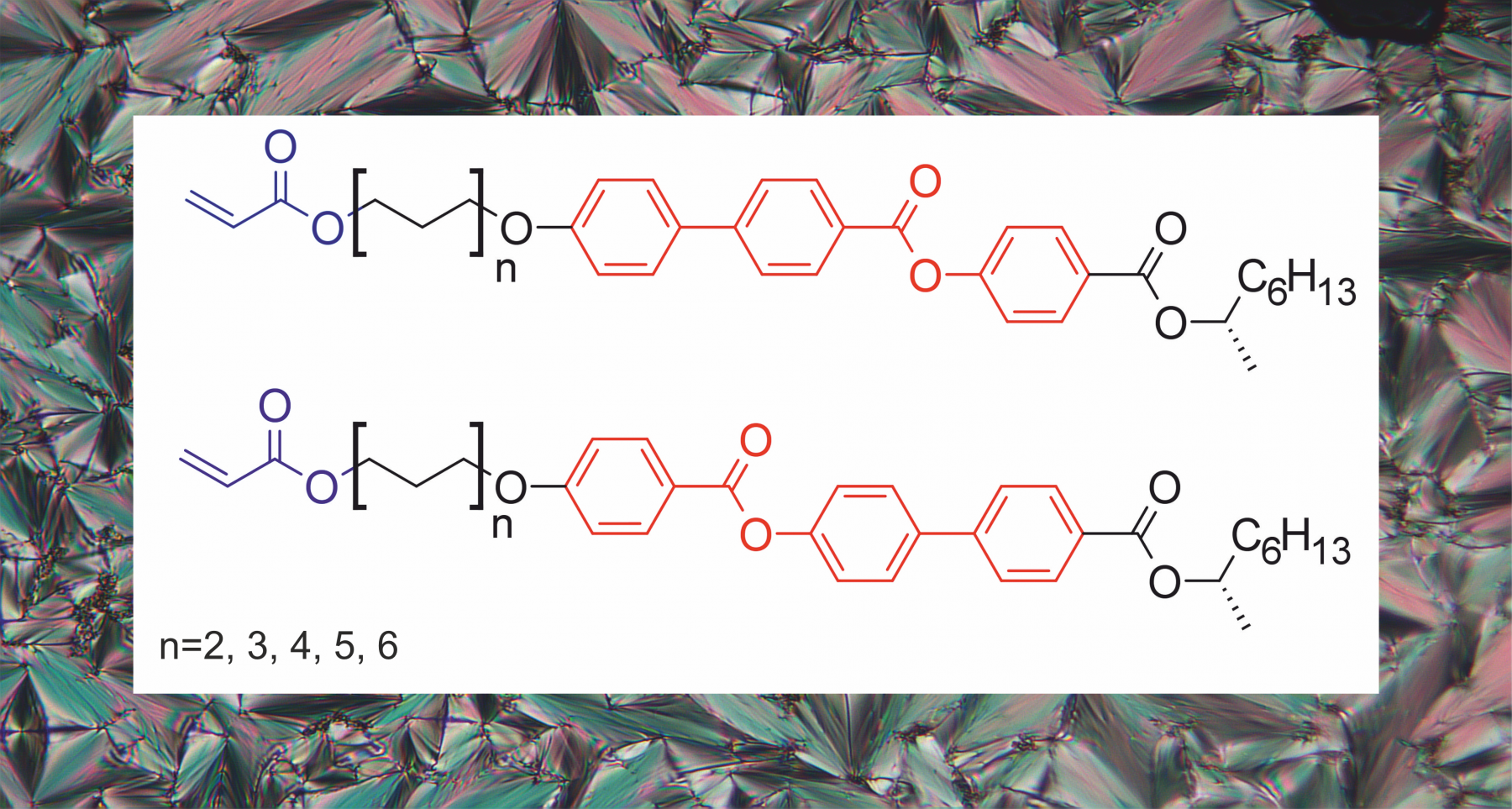The stabilisation and control of synclinic and anticlinic chiral liquid crystalline phases remain an actual and highlighted task. This work presents the design and mesomorphic properties of new chiral calamitic reactive mesogens, monoacrylates, based on biphenyl benzoate and phenyl biphenyl-4-carboxylate cores with reactive terminal groups placed far from the chiral chain. The compound’s structures, compatible with the components of modern ferroelectric and antiferroelectric liquid crystalline mixtures, are confirmed by mass spectrometry (electron ionization) analysis and proton/carbon nuclear magnetic resonance. All the reactive mesogens possess the self-assembling, i.e. liquid crystalline behaviour with high tendency to create smectic phases in a broad temperature range, which was confirmed by a polarizing optical microscopy, differential scanning calorimetry and broad-band dielectric spectroscopy. Doping of advanced multicomponent mixtures possessing the chiral smectic phases by the designed monoacrylates with further cross-linking procedure, can be an effective and functional tool for stabilising ferroelectric and antiferroelectric phases in various states and hence, can allow the symmetrisation of the switching times in the modes employed surface stabilised geometry; this is a very highlighted task for optoelectronics. Moreover, an evident considerable tendency for thermal polymerisation of specific reactive mesogens can reduce the drawbacks of polymer stabilisation.
Download a copy of the manuscript (preprint version)

